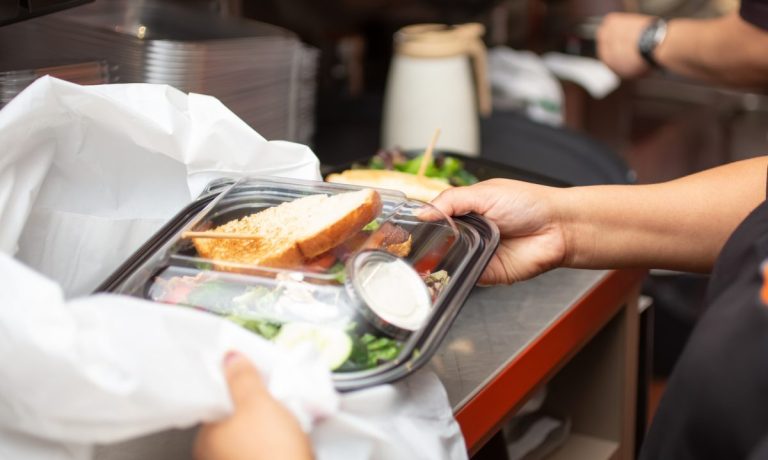
New digital technologies are allowing companies to expand globally in ways that once would have been impossible.
This past week alone, Texas-based 130+-restaurant chain On The Border announced that it is growing its presence in South Korea; Inspire Brands-owned 3,500+-store sandwich chain Arby’s announced that it is expanding to Saudi Arabia; and McDonald’s Executive Vice President and Chief Financial Officer Kevin Ozan told analysts of the chain’s plans to open 1,300 new international restaurants this year.
Earlier in the month, FAT Brands-owned diner chain Johnny Rockets, which has more than 325 locations in over 25 countries, announced plans to expand its presence in South America. The chain’s international expansion is enabled in part by the use of the ghost kitchen model to drive digital sales without the expenses of operating a full restaurant, FAT Brands Chief Operating Officer Thayer Wiederhorn told PYMNTS in an interview.
“Internationally, the economics of ghost kitchens and virtual restaurants make more sense than they do in the U.S.,” said Wiederhorn. “Renting space for kitchens is less expensive, as are rates for delivery drivers, etc. Codes are also less sophisticated. Overall, new tech grows faster internationally and often can’t take hold in the U.S. because the economics don’t make sense.”
One and the Same
Wiederhorn noted that the main differences from market to market come down less to consumer behavior and more to local laws and economies.
“In South America, our brands do a significant amount of ghost kitchen and virtual restaurant business,” said Wiederhorn, citing the chain’s digital locations’ strong performance in Chile as an example. “It all comes down to wages and economic difference.”
He said he believes that consumers’ behaviors once the technology is available look very similar across markets. However, the one notable exception in the short term that he flagged is that the course of the COVID-19 virus, which has varied from market to market, and the ways that each government has responded have made consumers behave differently in different locations.
“There are countries that won’t have vaccines for a while, so they are dealing with heavy-handed government shutdowns,” he said. “This definitely impacts consumer ordering behaviors.”
Can’t Touch This
As restaurant brands seek to offer increased digital accessibility around the world to adjust to these changes in regulations and behaviors, Wiederhorn said he believes that some innovations will prove stickier than others.
“I think kiosks are overhyped,” he said. “Everyone has a ‘kiosk’ in the palm of their hand — their mobile phones.”
He added that, where there was once “probably a window” when the technology made sense, the evolution of own-device ordering has rendered kiosks less relevant, especially since he said he believes that the pandemic has permanently made consumers more hesitant to touch public devices.
In fact, research from PYMNTS’ 2021 Restaurant Readiness Index, created in collaboration with Paytronix, found that restaurant managers overestimate the value of kiosks relative to consumers. Specifically, 28% of restaurant managers reported believing that self-service kiosks will be important to restaurants’ future success, while only 19% of consumers said the same.
Read more: QSRs’ Lagging Loyalty-Reward Investment Hurts Innovation and Sales
However, the study also found that top performing restaurants feature the ability to order using self-service kiosks at the restaurant far more often than bottom performers, with 32% of the former offering the option compared to just 14% of the latter.
Still, Wiederhorn said he believes that solutions that outsource labor to people off site, such as the one offered by San Jose, California-based company Bite Ninja, are a more effective way to make ordering more labor-efficient than kiosks.
In the Palms of Their Hands
Even with all the mobile innovations of the past couple years, Wiederhorn said he believes that phones are still being under-used in restaurant technology. For instance, he said he believes that QR codes that only show menus waste the opportunity to offer own-device payments, allowing the restaurant to learn more about their customers.
“If I am just looking at a PDF on my phone, then the restaurant is missing out on a rare opportunity for data collection,” he said. “This should be a tool that informs pricing, suggests add-ons, and can quickly react to commodity pricing and supply chain issues.”
Additionally, he noted, mobile devices can offer real-time information about location-specific changes in store hours, an issue that is especially relevant now with labor and pandemic challenges. After all, surprise closures can frustrate consumers, risking reducing brand affinity and losing their loyalty.
Overall, he said he believes that the biggest obstacle to restaurant innovation around the world remains inflation.
“In the U.S., omicron is surging, but we aren’t seeing the same extreme fallout from eating out or ordering food; the bigger issues are coming from inflation,” he said. “I hope [in a year] we are in a better state with COVID and that the supply chain becomes more stable. This will lend itself to talking more to category innovation and growth versus setbacks.”